Bay where no ships has been 60 years with no name
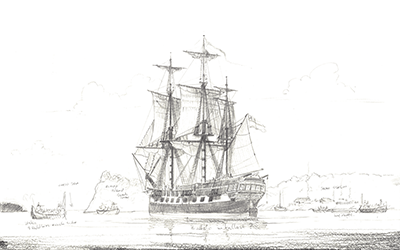
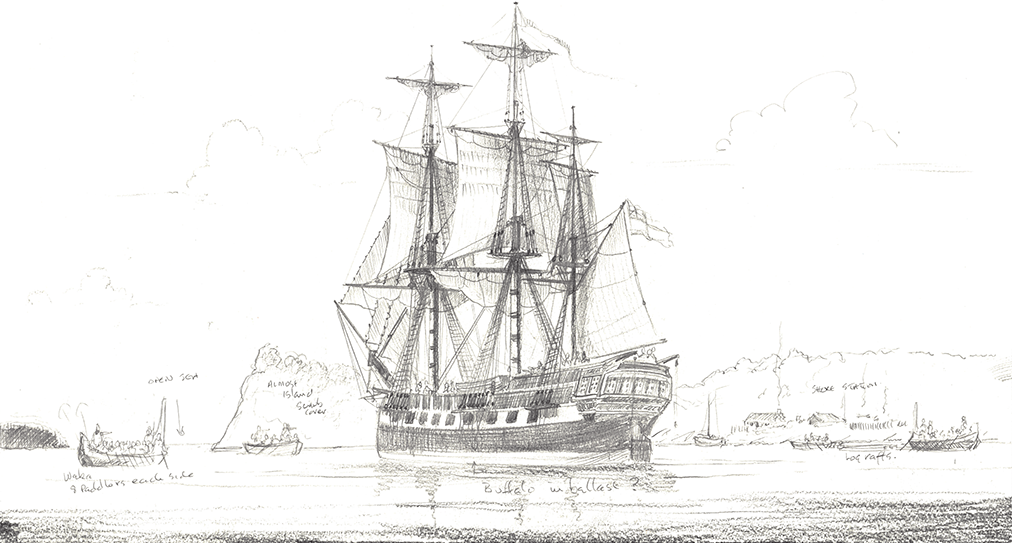
Picture Worth 167 000 Words: While the comparison is consciously odious, it is probable that—purely because more people will be beguiled by it—a new work by marine artist Paul Deacon will do more in a single image to convey the essence of the Mahurangi Harbour European settlement than the entire 416-page, 167 000-word Jade River: A History of the Mahurangi. modello Paul Deacon
It was almost certainly a good thing, that 60 years ago the name of the Auckland region’s first European settlement slid unnoticed into the next bay north.
Had the bay been known by a descriptive name, such as Spar Station Cove, or by any name at all, even less of the archaeology of Gordon Browne’s enterprise would have survived. The pillaging of the 155-year-old Mangawhai-built schooner Daring’s immediately her intact hull and decks were disinterred, by big, sand-shifting tides last winter, is an unwelcome reminder that civilised behaviour is not inherited, but must be determinedly instilled, generation by generation.
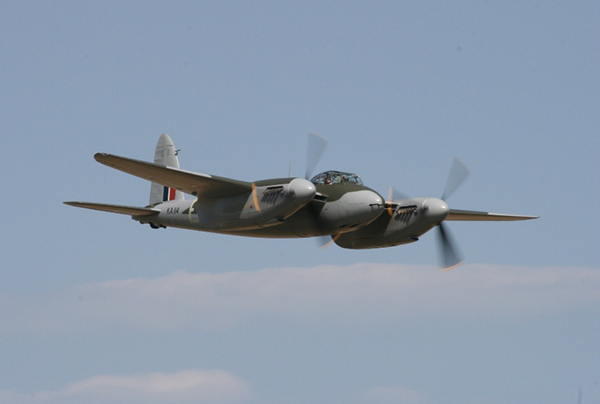
Spruce-Sparred Single-Shell Super Submarine-Sinker: Although only four de Havilland dh98 Mosquitos have been restored to flying condition, the 6710 that were designed and built during World War II determined the conflict’s outcome, because while the earlier-to-battle, better-surviving—54 are flying—Supermarine Spitfires indubitably prevented the United Kingdom from being overrun, without the faster, harder-hitting Mosquito—known to sink a u-boat with a single shell—the job could not have been finished. Restored in Aotearoa, and photographed here at Masterton in 2013, the composite wood construction devised by Geoffrey de Havilland produced a lighter, stronger and more streamlined aircraft than rivetted metal ever could. It has taken nearly eight decades for the aircraft industry to re-embrace composite construction at scale. The Canadian yellow birch used for the ply-balsa-ply composite was too heavy and brittle to be useful for topmasts—had kauri ply been available in quantity, it might possibly have produced an even stronger composite. Light, supple spruce was used for the Mosquito’s wing spars. image Aces Flying High
The first, incomplete chart made of the Mahurangi Harbour doesn’t name the bay so much as label the settlement in it Mr Brown’s establishment. Omitting Mr Browne’s e was the least disrespectful action of the hmss Buffalo, but while her mate F A Cudlip’s soundings survived to detail the 1891 compilation chart Mahurangi Harbour and Approaches, the spar station label didn’t, nor was the bay named. Nor was it on the 1906 chart, but the name resurfaced:
…misplaced to the north on the 1959 topo and changed to G Browns Bay, changed again to Brownes Bay in 1979, moved further into the wrong bay in 1989 where it sits today.Robert Brassey, pers. comm., 29 July 2019
Place names, first and foremost, must have utility. In the case of the spar station bay, having to describe it as bay immediately south of Brownes Bay, Mahurangi Harbour, is messy. Addressing misplaced, misspelled or wholly lacking names is, rightfully, a rigorous process. With the adoption of the New Zealand Geographic Board Act(Ngā Pou Taunaha o Aotearoa) 2008, the means are provided for:
…appropriate recognition to be accorded to cultural and heritage values associated with geographic features…
Inevitably, when Europeans began charting Aotearoa, a profusion of personal names were plastered around the coastline. One of the more egregious examples is Auckland, for what was well established in te reo Māori as Tāmaki Makaurau. The Mahurangi Magazine has long argued for the let’s-meet-halfway option of the euphonious Makaurau—the desired by many part, and deemphasising the Tāmaki battleground. George Eden, 1st Earl of Auckland, was not unusual, as a source of New Zealand toponymy, in having never set foot in the antipodes. The then Lord Auckland’s mendacious and calamitous invasion of Afghanistan that cost 16500 lives in the infamous 1842 retreat from Kabul alone, should have led New Zealanders, long since, to jettison the name of his deservedly short-lived earldom.
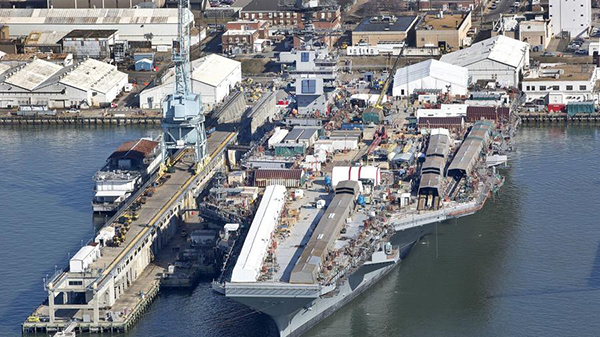
Naval Superiority Never Came Cheap: That the British Admiralty had to send its storeships to the other side of the globe to procure components critical to the propulsion of its warships—superbly performing kauri topmasts—is a sobering reminder of the eternal, cardinal importance of energy. One hundred eighty-five years after the Buffalo burst upon the Mahurangi snatching essential military supplies from a hapless Gordon Browne contracted to perform the same service, China is poised to build a fleet of four nuclear-powered aircraft carriers, to add to the fossil-fuelled behemoth it launched two years ago, while the United States’ latest and greatest suffers a series of humiliating setbacks. The prototype uss Gerald R Ford, still far from fit-for-purpose six years after her launching at the Newport News shipyard, while her namesakes legacy does rather better. image Jonathon Gruenke | Daily Press
Indisputably, the first duty when addressing New Zealand place-name lacunae is to address the loss of the indigenous. In the case of the unnamed, spar station cove, no historic te reo Māori option is known that might be restored. The nearest pre-European name is that of the extreme southern point of the Pukapuka Peninsula, Ōauatry Oar oh-uh—effectively, mullet point.
Lacking an indigenous name, the next duty of the geographer is to the historic. Being the first European settlement in the Auckland region narrows down the options nicely, as does the precedent of the location being marked as Mr. Brown’s Establishment by Mr Frank A Cudlip on his 1834 chart, and its subsequent iterations as G. Browns Bay and, finally, the win-some-lose-some Brownes Bay.
Had the name not been displaced one bay north, there would have been no cause to contemplate whether Brownes Bay should be revisited. But one important of the criteria for assessing a name’s suitability that would have disqualified Brownes Bay with or without an e is the existence of another location so-named in the geographic vicinity—populous Browns Bay just 26 kilometres to the south. So, given not just the opportunity but the imperative to differentiate the Brownes/Browns bays, the options are:
- reinstate the g
- spell Gordon out; or
- replace with a descriptive name.
Including first names is a toponymy no-no and generally to be resisted. And while Gordon Browne Bay would literally retain the strong link with Gordon Browne’s role in establishing the spar station, the name, if reattached to the bay, would in practice excite very little curiosity about who Gordon Browne was. The assumption would be that, like too many New Zealand place names, it simply records the name of an early—by New Zealand standards—property holder.
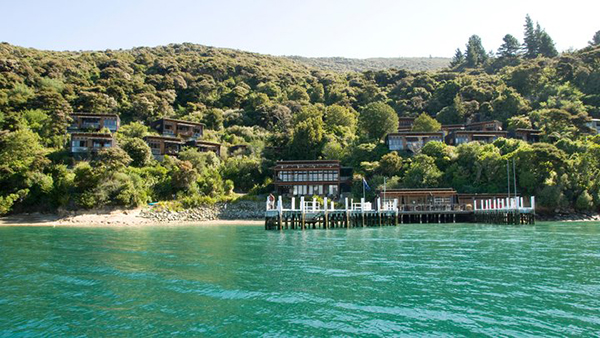
Bays Will Be Bays: One of the only 57 officially gazetted New Zealand topographical names featuring the word Cove is in fact one of the 700-odd Bays, but nor does it have especially “high cliffs protecting vessels from prevailing winds” as some definitions suggest it should. Gordon Browne’s spar station cove was certainly well protected from the prevailing southwesterlies, but just too far up-harbour to shelter ships. Here, at the Bay of Many Coves in the Marlborough Sounds, the foreshore it is more abrupt than that of the Mahurangi cove in question, but nor is it high-cliff. image Tourism New Zealand
In contrast, if an entirely descriptive name was chosen that recorded the historical archaeology of coastal trade on the Mahurangi River, and Auckland region’s first pre-European settlement, many more people would learn about Gordon Browne the man. Spar Station Cove could do that, and Cove rather than boring Bay, to address the double-bay dilemma. Pairs of Little- and Big-this-bay-or-other are almost as banal as North and South Island. Or All Black, and its endless, breathless iterations. There are, however, generations of Mahurangi children who know the bay currently misnamed Brownes Bay as Flax Bay. Curiously, considering its historic importance in coastal trade, harakeke is totally ignored toponymically. Given that Gordon Browne’s first antipodean enterprise was procuring processed harakeke, Harakeke Bay would euphoniously echo that connection.
Cove may strike some as queer, given the low incidenceabout 1 bay in 14 officially gazetted is named something-Cove of the term’s use—there are only 58 officially gazetted, including a Bay of Many Coves, compared with the 715 bays named Bay. Counting against the term, however, is the not-infrequent small-coastal-inlet additional distinction:
…especially one having high cliffs protecting vessels from prevailing winds.
Either Spar Station Cove or Spar Station Bay would be an Improvement on no name, but, given England’s immense maritime heritage, the English language palette is astonishing small when it comes to topographical-element-names for coastal features generally, but for bays in particular.
What is unarguable is that for 60 years too long, the “bay where no ships have beenas referred to by Gordon Browne’s business partner, Captain Ranulph Dacre, the Mahurangi Harbour as a potential spar station” has also been the bay where no name has been.
Short defence of a long bowthe longbow, of course, and superior topmasts occupy pivotal places in the establishment and maintenance of the United Kingdom’s military superiority In defence of the admittedly very long bow drawn to the composite construction of dh98 Mosquito, Mahurangi is home to New Zealand’s supremely successful ultra-high-performance multihull component manufacturer, Core Builders Composites.
